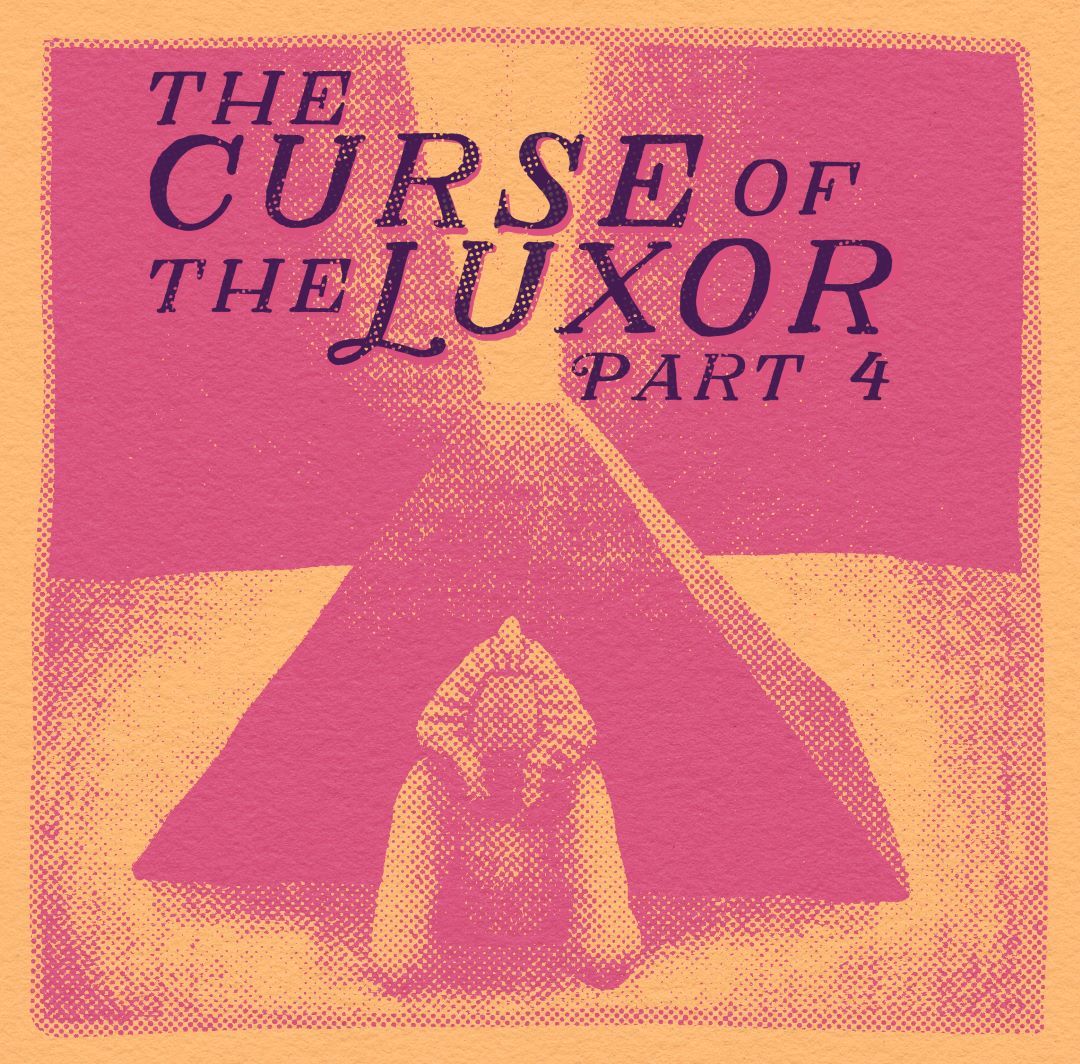The Curse of the Luxor Hotel (Part 4)

Check out the rest of my look at the legends surrounding the Luxor Hotel: part 1, part 2, part 3
Content note: this one gets slightly gruesome, with mentions of that creepy Bodies exhibit.
Despite my fond memories of the Luxor, it seems like there’s some bad vibes at there; that much is clear.
Also, I doubt it helps that the Luxor is also host to two exhibits:
The first is the “Bodies” exhibit that was so popular in the late 2000s. To be clear, the Vegas exhibit isn’t the only one. I remember back in, say 2005-2008, there were tons and tons of “Bodies” exhibits all over the world. The Luxor got a permanent version of the “Bodies” exhibit in 2009.
In case you haven’t heard of it, it’s an exhibit shows real human bodies that have had the skin stripped off, preserved using a method called plastination, and then dissected and displayed in different stages. Like for example, posted like they’re running, or playing tennis, etc.
There are some major issues with the “Bodies” exhibit, aside from it being . . . an awfully creepy and gruesome display of real human bodies. Human rights advocates have raised concerns that the bodies may have been gathered from executed Chinese political prisoners, without the consent of the prisoners and their families.
Wikipedia points out that the archived exhibition page included a gruesome disclaimer:
This exhibit displays human remains of Chinese citizens or residents which were originally received by the Chinese Bureau of Police. The Chinese Bureau of Police may receive bodies from Chinese prisons. Premier cannot independently verify that the human remains you are viewing are not those of persons who were incarcerated in Chinese prisons. . . . Premier relies solely on the representations of its Chinese partners and cannot independently verify that they do not belong to persons executed while incarcerated in Chinese prisons.
(That was from the 2008 version of the site; the disclaimer has since been removed.)
A 2006 NPR story said:
Dr. Gunther von Hagens, the inventor of plastination and the impresario behind the Body Worlds exhibitions, says that every whole body exhibited in North America comes from fully informed European and American donors, who gave permission, in writing, for their bodies to be displayed. The science museums that have hosted Body Worlds also make this assurance.
“What I certainly never use for public exhibitions are unclaimed bodies, prisoners, bodies from mental institutions and executed prisoners,” von Hagens says.
Chinese medical schools supply von Hagens with unclaimed bodies, which he plastinates and sells to universities. Von Hagens used to take cadavers from the former Soviet Union, but he stopped after body-trafficking scandals in Russia and the Kyrgyz Republic.
Five years ago, customs officers intercepted 56 bodies and hundreds of brain samples sent from the Novosibirsk Medical Academy to von Hagens’ lab in Heidelberg, Germany. The cadavers were traced to a Russian medical examiner who was convicted last year of illegally selling the bodies of homeless people, prisoners and indigent hospital patients.
Von Hagens was not charged with any wrongdoing, and says his cadavers are obtained only through proper legal and ethical channels.
Still, NPR has learned there’s no clear paper trail from willing donors to exhibited bodies.”
A number of religious groups, as well as bioethicists, have objected to the concept in general. There’s something really sick about paying money to look at exhibits of human bodies, put out on display, especially when the company that put on the exhibit hasn’t been able to come up with consent documentation for the people who are on display.
After the 2020 COVID shutdown, The Bodies exhibit reopened with updated displays showing the effects of COVID on the human body.
And if the questionably sourced bodies obtained by a creepy German doctor aren’t enough for you, there’s also a Titanic exhibit that includes more than 250 artifacts from the wreck, including, to quote the exhibit’s website “luggage, the ship’s whistles, floor tiles from the first-class smoking room, a window frame from the Verandah Cafe and an unopened bottle of champagne with a 1900 vintage.”
The exhibit looks pretty cool, but, you know, if we're looking for possible reasons why people might think the hotel is haunted, the fact that there are two major exhibits that focus on death and disaster could have something to do with it.
And I've only just begun enumerating some of the theories behind the supposed "Luxor Curse."
Check out the rest of this series about the history and hauntings of the Luxor hotel:
- Part 1: creative vision and Xanadu
- Part 2: the glory days and the legendary (according to me when I was a child) Nile River ride
- Part 3: De-theming sucks
This article doesn’t link to sources as comprehensively as usual, because I wrote it based on my original episode notes, which I penned when I was worse at adding specific in-line citations. But all of the sources I used are linked at the bottom of the episode shownotes page. And I’m not proud of it, but I can tell you that a ton of this info is from Wikipedia.

